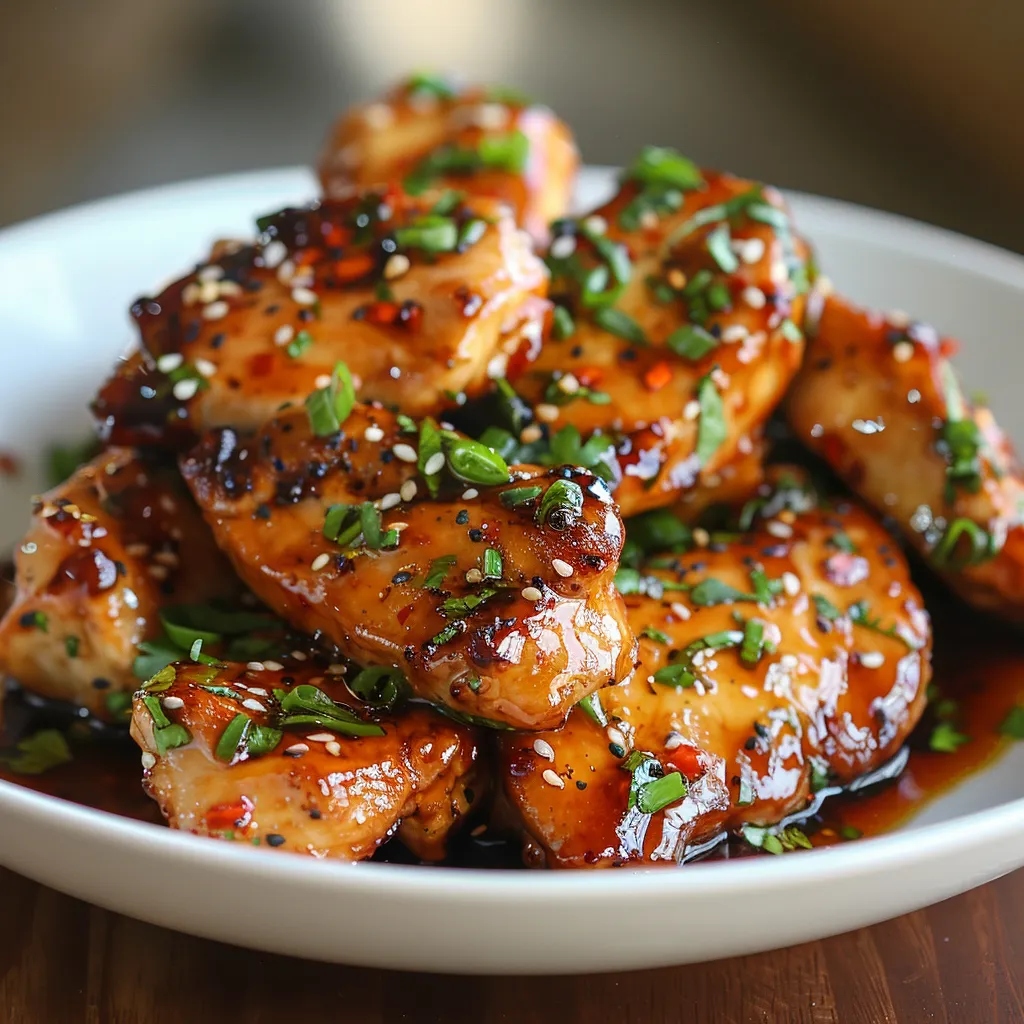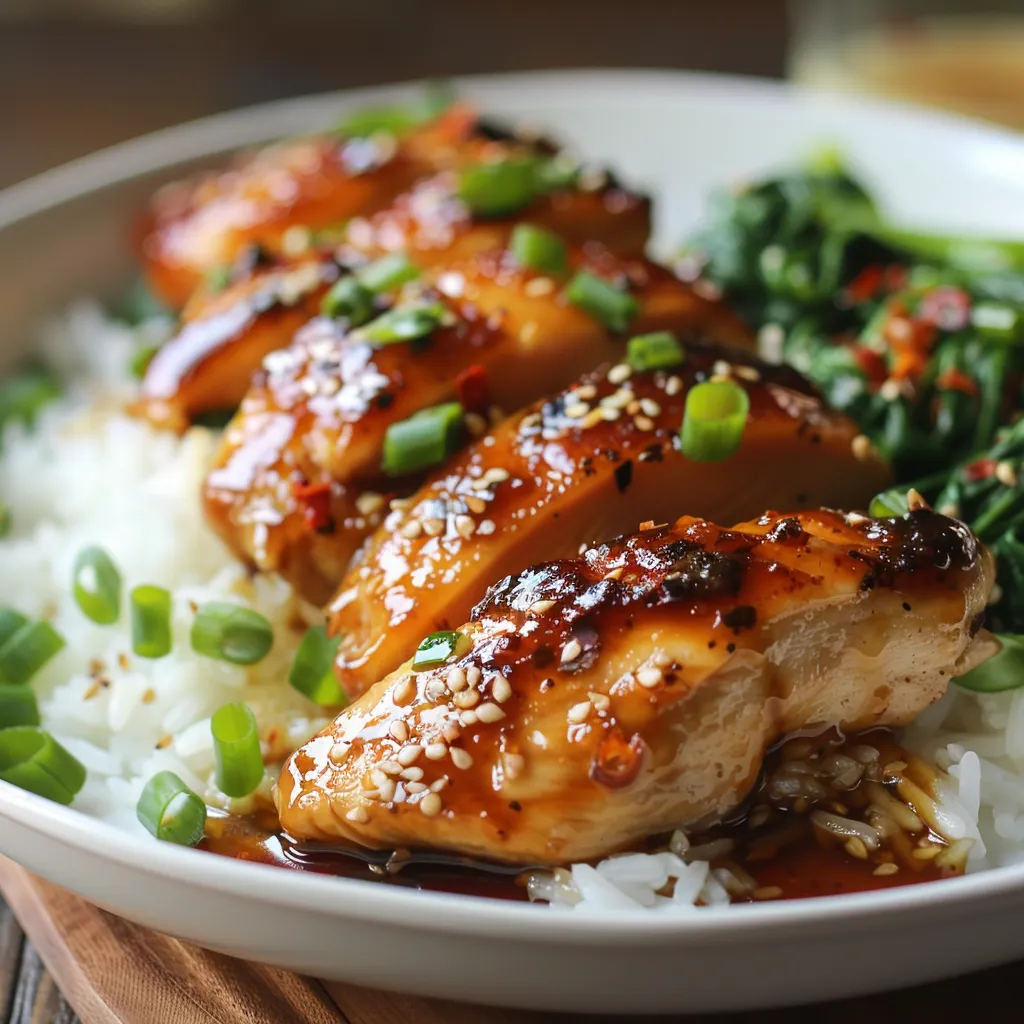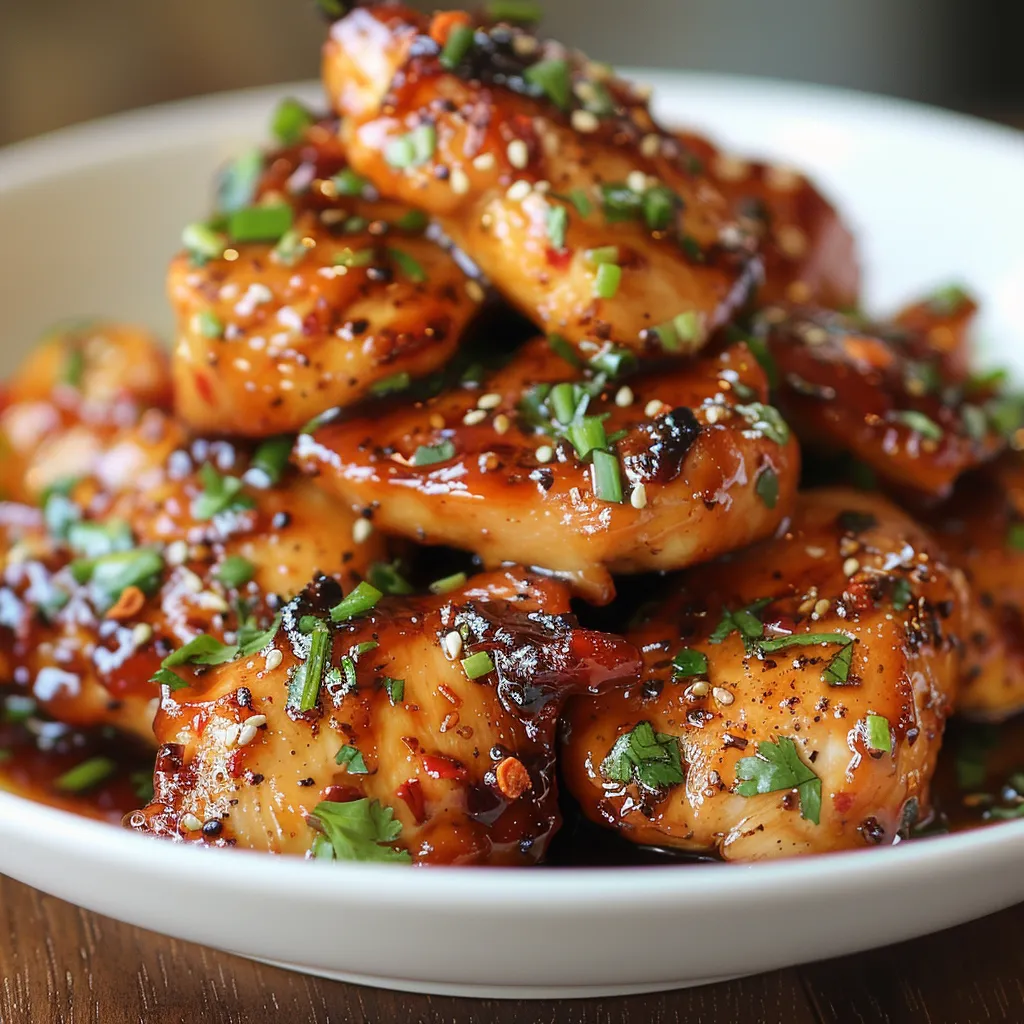 Pin it
Pin it
This sweet and savory chicken dish transforms simple ingredients into a glossy, caramelized masterpiece. The secret lies in allowing the sauce to reduce to the perfect sticky consistency while keeping the chicken tender and juicy. Each bite delivers a harmonious blend of Asian flavors that cling beautifully to the meat.
During recipe development, I discovered that allowing the sauce to reduce before returning the chicken creates that perfect glaze without overcooking the meat.
Essential Components
- Chicken thighs: Fresh, uniform in size for even cooking
- Premium soy sauce: Provides deep umami base notes
- Fresh ginger root: Young with thin, bright skin
- Hoisin sauce: Adds complexity and natural thickening properties
- Brown sugar: Creates perfect caramelization
- Fresh lime juice: Brightens all flavors
- Sweet chili sauce: Brings balanced heat and thickness
- High-quality sesame oil: For finishing
- Green onions: Crisp and bright for garnish
Kitchen Choreography
- Protein Preparation:
- Pat chicken completely dry with paper towels, ensuring better browning. Season thoroughly, allowing meat to come to room temperature while gathering other ingredients. Cut pieces uniformly for even cooking.
- Sauce Symphony:
- Combine sauce ingredients in precise order, starting with brown sugar to help dissolve other components. Whisk until completely smooth, ensuring no sugar lumps remain. Allow sauce to reduce until it coats the back of a spoon.
- Glazing Mastery:
- Return chicken to pan with reduced sauce, turning pieces constantly to build up layers of glaze. Watch for sauce to become shiny and cling to the meat.
- Final Flourish:
- Garnish with sesame seeds and green onions just before serving to maintain maximum freshness and crunch.
 Pin it
Pin it
My Asian grandmother taught me to add a splash of rice vinegar at the end - it balances the sweetness perfectly.
Perfect Presentation
Arrange the glazed chicken on a serving platter, allowing the sauce to pool slightly around the edges. Create layers of visual interest by placing chicken over a bed of steamed jasmine rice or noodles. Garnish with a combination of black and white sesame seeds, finely sliced green onions cut on a diagonal, and optional fresh red chilies for color contrast. Consider adding blanched baby bok choy or steamed broccoli around the edges for both nutrition and visual appeal.
Versatile Variations
Adapt this dish to create different flavor profiles while maintaining the perfect glaze. For a spicier version, add sambal oelek or Korean gochujang to the sauce. Create a citrus-forward variation by incorporating orange zest and juice. For added texture, consider coating the chicken in cornstarch before frying. Some families add vegetables like bell peppers or snap peas during the final glazing step.
Storage Solutions
Store leftovers in an airtight container for up to three days, keeping sauce separate if possible. When reheating, add a splash of chicken broth or water to restore the sauce's consistency. For best results, reheat in a skillet rather than microwave to maintain the glaze's texture. If meal prepping, prepare sauce in advance but cook chicken fresh for optimal results.
 Pin it
Pin it
Sticky Asian glazed chicken represents the perfect balance of sweet, savory, and umami flavors. Through countless preparations, I've found that patience during the sauce reduction process creates the most satisfying results. The way the glaze clings to each piece while maintaining the chicken's juiciness makes this dish a reliable favorite for both family dinners and entertaining. Whether served over rice or noodles, this dish consistently delivers restaurant-quality results in the comfort of your own kitchen.
Frequently Asked Questions
- → Can I use chicken thighs instead of breasts?
- Yes, boneless chicken thighs work great and often stay more tender than breasts. Just ensure they reach 165°F internal temperature.
- → How do I know when the sauce is thick enough?
- The sauce should coat the back of a spoon and leave a clear line when you run your finger through it. It will continue to thicken as it cools.
- → Can I make this dish less sweet?
- You can reduce the brown sugar to ½ cup without significantly affecting the glazing effect of the sauce.
- → What can I serve with this chicken?
- It pairs well with steamed rice, stir-fried vegetables, or noodles. The sauce is great drizzled over sides.
- → Can I make the sauce ahead of time?
- Yes, you can prepare the sauce up to 3 days ahead and store it in the refrigerator. Reheat gently before using.
